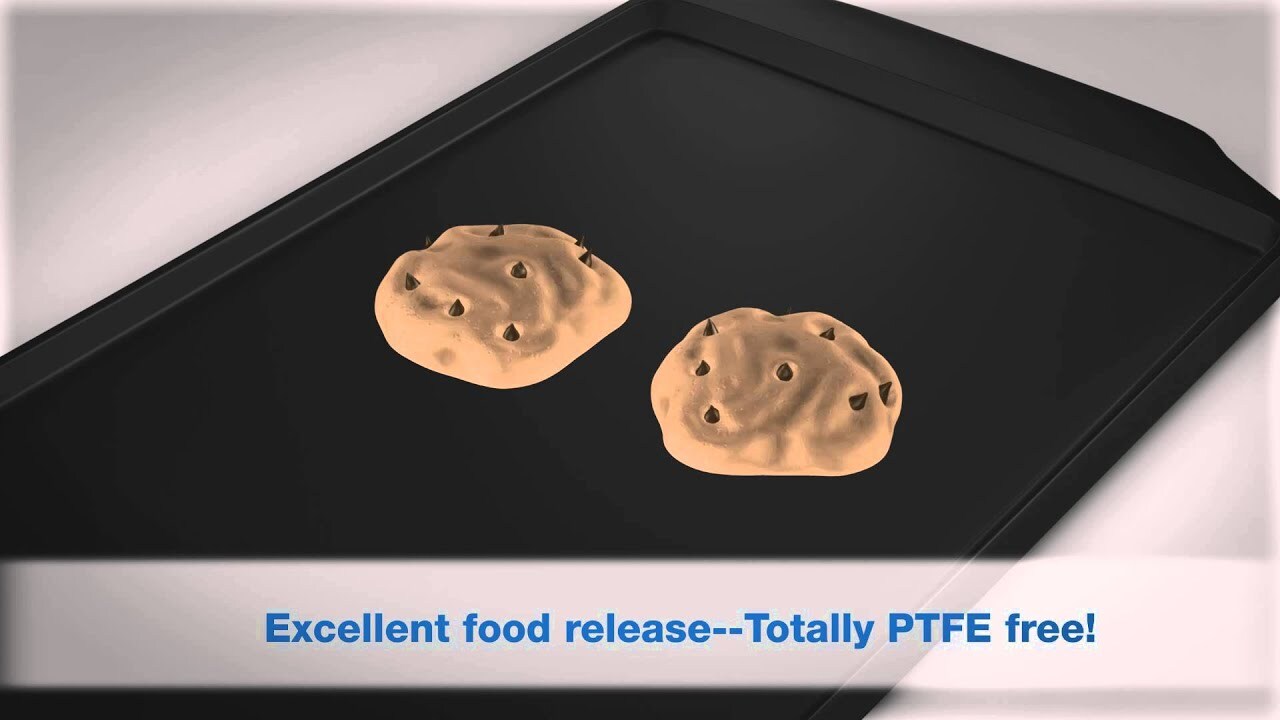CERAM-X Bakeware Performance
CERAM-X® offers significant performance attributes over traditional “silicone” based bakeware coatings, such as:
- Unparalleled scratch resistance (5-6H pencil hardness)
- Unparalleled heat resistance (over 650° F)
Click on the video to see a clear depiction of the benefits of CERAM-X® on bakeware.
Questions About CERAM-X®
For our clients who do not understand the details about the difference between ceramic coatings, hybrid ceramic coatings, and traditional silicone bakeware coatings, we have prepared a primer on the subject:
What is a ceramic coating?
Ceramic coatings are “inorganic” coatings in which A) the base resins are of a ceramic like nature, and B) key reactions forming the main components of the finished film occur in the process of application and curing of the coating.
What is a silicone coating?
Silicone coatings are based on synthetic resins in which the primary mode of food release is based on the low friction properties of silicone. Silicone coatings are solvent based, which is important because these coatings do not cause carbon and aluminized steel substrates (common in most bakeware) to rust during application. Silicone technology works well in the short run, but in the long term the food release will diminish because the silicone release agents are washed off during normal dishwashing and cooking. Silicone has been the dominant type of bakeware coating used for decades.
What is a “hybrid” ceramic coating?
Hybrid ceramic coatings is a technology in which a ceramic coating is blended with a silicone based technology, in order to improve the flexibility of the coating. Hybrid ceramic coatings are not as hard, or as heat resistant, as regular ceramic coatings, but they are much more flexible which is crucial.
Why is it crucial that the coating be more flexible if it is used on bakeware?
Bakeware is traditionally made with a thinner gauge metal that can be slightly bent by consumers in normal kitchen use. Even this minor bending (on, for instance, a cookie sheet) can cause regular ceramic coatings to chip off easily. On the other hand, cookware or small electric appliances made with heavier metal gauges do not bend easily and therefore do not require hybrid ceramics.
So regular ceramic coatings are of higher quality than hybrid ceramic coatings?
Yes. However, there is no way around this problem because the same attributes which make regular ceramics very attractive (hardness, scratch resistance) make them vulnerable to chipping when applied onto low gauge metal substrates.
But how does CERAM-X® compare to a traditional silicone bakeware coating?
CERAM-X offers better performance in scratch resistance, heat resistance, and hardness versus a traditional bakeware coating while being equivalent in food release. Therefore, there are truly no downsides in using ceramic technology on bakeware versus silicone technology. Note, that this is unlike the trade-offs between ceramic technology and PTFE technology, because PTFE has a clear advantage on food release in the long run. CERAM-X is totally superior to silicone based technology for bakeware.










